Poetry in Motion
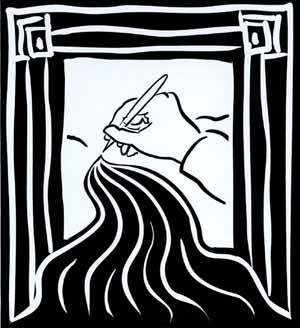
Poetry in Emotion
Poetry in Motion

Poetry in Emotion
We are all poets at heart, the heart being the emotional body or the soul connection.
Poetry is a cry from the emotional body. "I am lost, in pain, fear and confusion. I must write about my suffering and share it with others."
Poetry is a faster way to express emotions than writing a short story, article, or book. It is a way to release emotions that hold one down with just a few short lines.
Poetry is often part of one's journal or diary.
Poems do not have to rhythm. They just speak to the writer and often the reader who is drawn to read them and empathize.
Poetry often shows us that we have writing skills.
Not everyone is a writer but everyone has a story to tell, for that story was written at the beginning of time and is your journey here.
Anyone can be a poet.
Write and create as you are guided.
If you want to post a poem, there are many websites on the Internet for that purpose. Perhaps you could create and publish a book of poetry.
Find your means of self expression and go for it.
Poetry (from the Latin poeta, a poet) is a form of literary art in which language is used for its aesthetic and evocative qualities in addition to, or in lieu of, its apparent meaning. Poetry may be written independently, as discrete poems, or may occur in conjunction with other arts, as in poetic drama, hymns, lyrics, or prose poetry. It is published in dedicated magazines (the longest established being Poetry and Oxford Poetry), individual collections and wider anthologies.
Poetry and discussions of it have a long history. Early attempts to define poetry, such as Aristotle's Poetics, focused on the uses of speech in rhetoric, drama, song, and comedy.
Later attempts concentrated on features such as repetition, verse form and rhyme, and emphasized the aesthetics which distinguish poetry from more objectively informative, prosaic forms of writing, such as manifestos, biographies, essays, and novels .
From the mid-20th century, poetry has sometimes been more loosely defined as a fundamental creative act using language.
Poetry often uses particular forms and conventions to suggest alternative meanings in the words, or to evoke emotional or sensual responses. Devices such as assonance, alliteration, onomatopoeia, and rhythm are sometimes used to achieve musical or incantatory effects.
The use of ambiguity, symbolism, irony, and other stylistic elements of poetic diction often leaves a poem open to multiple interpretations. Similarly, metaphor, simile, and metonymy create a resonance between otherwise disparate images - a layering of meanings, forming connections previously not perceived. Kindred forms of resonance may exist, between individual verses, in their patterns of rhyme or rhythm.
Some forms of poetry are specific to particular cultures and genres, responding to the characteristics of the language in which the poet writes. While readers accustomed to identifying poetry with Dante, Goethe, Mickiewicz and Rumi may think of it as being written in lines based upon rhyme and regular meter, there are traditions, such as Biblical poetry, that use other approaches to achieve rhythm and euphony.
Much of modern British and American poetry is to some extent a critique of poetic tradition, playing with and testing (among other things) the principle of euphony itself, to the extent that sometimes it deliberately does not rhyme or keep to set rhythms at all.
In today's globalized world poets often borrow styles, techniques and forms from diverse cultures and languages.
Poetry as an art form may predate literacy. Many ancient works, from the Indian Vedas (1700-1200 BC) and Zoroaster's Gathas (1200-900 BC) to the Odyssey (800-675 BC), appear to have been composed in poetic form to aid memorization and oral transmission, in prehistoric and ancient societies. Poetry appears among the earliest records of most literate cultures, with poetic fragments found on early monoliths, runestones, and stelae.

The oldest surviving epic poem is the Epic of Gilgamesh, from the third millennium BC in Sumer (in Mesopotamia, now Iraq), which was written in cuneiform script on clay tablets and, later, papyrus. Other ancient epic poetry includes the Greek epics Iliad and Odyssey, the Old Iranian books the Gathic Avesta and Yasna, the Roman national epic, Virgil's Aeneid, and the Indian epics Ramayana and Mahabharata.
The efforts of ancient thinkers to determine what makes poetry distinctive as a form, and what distinguishes good poetry from bad, resulted in "poetics" - the study of the aesthetics of poetry.
Some ancient societies, such as the Chinese through the Shi Jing, one of the Five Classics of Confucianism, developed canons of poetic works that had ritual as well as aesthetic importance.
More recently, thinkers have struggled to find a definition that could encompass formal differences as great as those between Chaucer's Canterbury Tales and Matsuo Basho's Oku no Hosomichi, as well as differences in context spanning Tanakh religious poetry, love poetry, and rap.
Context can be critical to poetics and to the development of poetic genres and forms. Poetry that records historic events in epics, such as Gilgamesh or Ferdowsi's Shahnameh, will necessarily be lengthy and narrative, while poetry used for liturgical purposes (hymns, psalms, suras, and hadiths) is likely to have an inspirational tone, whereas elegy and tragedy are meant to evoke deep emotional responses.
Other contexts include Gregorian chants, formal or diplomatic speech, political rhetoric and invective, light-hearted nursery and nonsense rhymes, and even medical texts.
The Polish historian of aesthetics, Wladyslaw Tatarkiewicz, in a paper on "The Concept of Poetry," traces the evolution of what is in fact two concepts of poetry. Tatarkiewicz points out that the term is applied to two distinct things that, as the poet Paul Valery observed, "at a certain point find union. Poetry is an art based on language. But poetry also has a more general meaning that is difficult to define because it is less determinate: poetry expresses a certain state of mind."
Classical thinkers employed classification as a way to define and assess the quality of poetry. Notably, the existing fragments of Aristotle's Poetics describe three genres of poetry - the epic, the comic, and the tragic - and develop rules to distinguish the highest-quality poetry in each genre, based on the underlying purposes of the genre.
Later aestheticians identified three major genres: epic poetry, lyric poetry, and dramatic poetry, treating comedy and tragedy as subgenres of dramatic poetry.
Aristotle's work was influential throughout the Middle East during the Islamic Golden Age, as well as in Europe during the Renaissance. Later poets and aestheticians often distinguished poetry from, and defined it in opposition to prose, which was generally understood as writing with a proclivity to logical explication and a linear narrative structure.
This does not imply that poetry is illogical or lacks narration, but rather that poetry is an attempt to render the beautiful or sublime without the burden of engaging the logical or narrative thought process. English Romantic poet John Keats termed this escape from logic, "Negative Capability". This "romantic" approach views form as a key element of successful poetry because form is abstract and distinct from the underlying notional logic. This approach remained influential into the 20th century.
During this period, there was also substantially more interaction among the various poetic traditions, in part due to the spread of European colonialism and the attendant rise in global trade. In addition to a boom in translation, during the Romantic period numerous ancient works were rediscovered.
Some 20th-century literary theorists, relying less on the opposition of prose and poetry, focused on the poet as simply one who creates using language, and poetry as what the poet creates. The underlying concept of the poet as creator is not uncommon, and some modernist poets essentially do not distinguish between the creation of a poem with words, and creative acts in other media such as carpentry.
Other modernists challenge the very attempt to define poetry as misguided, as when Archibald MacLeish concludes his paradoxical poem, "Ars Poetica", with the lines: "A poem should not mean/but be."
Disputes over the definition of poetry, and over poetry's distinction from other genres of literature, have been inextricably intertwined with the debate over the role of poetic form.
The rejection of traditional forms and structures for poetry that began in the first half of the 20th century coincided with a questioning of the purpose and meaning of traditional definitions of poetry and of distinctions between poetry and prose, particularly given examples of poetic prose and prosaic poetry.
Numerous modernist poets have written in non-traditional forms or in what traditionally would have been considered prose, although their writing was generally infused with poetic diction and often with rhythm and tone established by non-metrical means.
While there was a substantial formalist reaction within the modernist schools to the breakdown of structure, this reaction focused as much on the development of new formal structures and syntheses as on the revival of older forms and structures.
More recently, postmodernism has fully embraced MacLeish's concept and come to regard the boundaries between prose and poetry, and also among genres of poetry, as having meaning only as cultural artifacts.
Postmodernism goes beyond modernism's emphasis on the creative role of the poet, to emphasize the role of the reader of a text (Hermeneutics), and to highlight the complex cultural web within which a poem is read.
Today, throughout the world, poetry often incorporates poetic form and diction from other cultures and from the past, further confounding attempts at definition and classification that were once sensible within a tradition such as the Western canon.
Specific poetic forms have been developed by many cultures. In more developed, closed or "received" poetic forms, the rhyming scheme, meter and other elements of a poem are based on sets of rules, ranging from the relatively loose rules that govern the construction of an elegy to the highly formalized structure of the ghazal or villanelle. Described below are some common forms of poetry widely used across a number of languages. Additional forms of poetry may be found in the discussions of poetry of particular cultures or periods and in the glossary.
The is one of several forms of lyric poetry originating in Europe. The term "sonnet" derives from the Occitan word sonet and the Italian word sonetto, both meaning "little song" or "little sound".
By the thirteenth century, it had come to signify a poem of fourteen lines that follows a strict rhyme scheme and specific structure. The conventions associated with the sonnet have evolved over its history.
The writers of sonnets are sometimes referred to as "sonneteers," although the term can be used derisively.
One of the best-known sonnet writers is William Shakespeare, who wrote 154 of them (not including those that appear in his plays). A Shakespearean, or English, sonnet consists of 14 lines, each line containing ten syllables and written in iambic pentameter, in which a pattern of an unemphasized syllable followed by an emphasized syllable is repeated five times. The rhyme scheme in a Shakespearean sonnet is a-b-a-b, c-d-c-d, e-f-e-f, g-g; the last two lines are a rhyming couplet.
Traditionally, English poets employ iambic pentameter when writing sonnets, but not all English sonnets have the same metrical structure: the first sonnet in Sir Philip Sidney's sequence Astrophel and Stella, for example, has 12 syllables: it is iambic hexameters, albeit with a turned first foot in several lines. In the Romance languages, the hendecasyllable and Alexandrine are the most widely used metres.

The Jintishi is a Chinese poetic form based on a series of set tonal patterns using the four tones of Middle Chinese in each couplet: the level, rising, departing and entering tones.
The basic form of the jintishi has eight lines in four couplets, with parallelism between the lines in the second and third couplets. The couplets with parallel lines contain contrasting content but an identical grammatical relationship between words.
 Jintishi often have a rich poetic diction, full of allusion, and can have a wide range of subject, including history and politics. One of the masters of the form was Du Fu, who wrote during the Tang Dynasty (8th century). There are several variations on the basic form of the jintishi.
Jintishi often have a rich poetic diction, full of allusion, and can have a wide range of subject, including history and politics. One of the masters of the form was Du Fu, who wrote during the Tang Dynasty (8th century). There are several variations on the basic form of the jintishi.
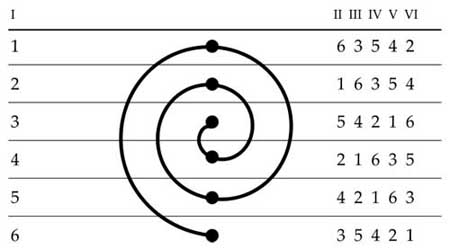
A sestina (also, sextina, sestine, or sextain) is a highly structured poem consisting of six six-line stanzas followed by a tercet (called its envoy or tornada), for a total of thirty-nine lines.
The same set of six words ends the lines of each of the six-line stanzas, but in a different order each time; if we number the first stanza's lines 123456, then the words ending the second stanza's lines appear in the order 615243, then 364125, then 532614, then 451362, and finally 246531.
This organization is referred to as retrogradatio cruciata ("retrograde cross"). These six words then appear in the tercet as well, with the tercet's first line usually containing 6 and 2, its second 1 and 4, and its third 5 and 3 but other versions exist.
Villanelle is a poetic form which entered English-language poetry in the 19th century from the imitation of French models. The word derives from the Italian villanella from Latin villanus (rustic).
A villanelle has only two rhyme sounds. The first and third lines of the first stanza are rhyming refrains that alternate as the third line in each successive stanza and form a couplet at the close. A villanelle is nineteen lines long, consisting of five tercets and one concluding quatrain. In music, it is a dance form, accompanied by sung lyrics or an instrumental piece based on this dance form.
The Pantoum is a form of poetry similar to a villanelle in that there are repeating lines throughout the poem. It is composed of a series of quatrains; the second and fourth lines of each stanza are repeated as the first and third lines of the next. This pattern continues for any number of stanzas, except for the final stanza, which differs in the repeating pattern.
The first and third lines of the last stanza are the second and fourth of the penultimate; the first line of the poem is the last line of the final stanza, and the third line of the first stanza is the second of the final. Ideally, the meaning of lines shifts when they are repeated although the words remain exactly the same: this can be done by shifting punctuation, punning, or simply recontextualizing.
A Roundel not to be confused with the rondel) is a form of verse used in English language poetry devised by Algernon Charles Swinburne (1837-1909). It is a variation of the French rondeau form. It makes use of refrains, repeated according to a certain stylized pattern.
A roundel consists of nine lines each having the same number of syllables, plus a refrain after the third line and after the last line. The refrain must be identical with the beginning of the first line: it may be a half-line, and rhymes with the second line. It has three stanzas and its rhyme scheme is as follows: A B A R ; B A B ; A B A R ; where R is the refrain.
Swinburne had published a book A Century of Roundels. He dedicated these poems to his friend Christina Rossetti, who then started writing roundels herself.

Tanka is a form of unrhymed Japanese poetry, with five sections totaling 31 onji (phonological units identical to morae), structured in a 5-7-5 7-7 pattern. There is generally a shift in tone and subject matter between the upper 5-7-5 phrase and the lower 7-7 phrase. Tanka were written as early as the Nara period by such poets as Kakinomoto no Hitomaro, at a time when Japan was emerging from a period where much of its poetry followed Chinese form.
Tanka was originally the shorter form of Japanese formal poetry, and was used more heavily to explore personal rather than public themes. It thus had a more informal poetic diction. By the 13th century, tanka had become the dominant form of Japanese poetry, and it is still widely written today. The 31-mora rule is generally ignored by poets writing literary tanka in languages other than Japanese.
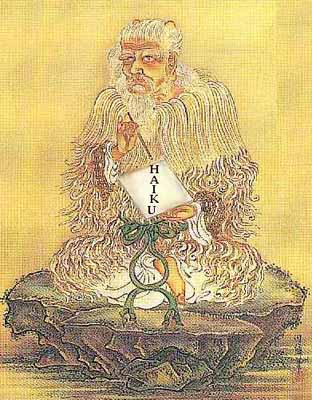
Haiku is a popular form of unrhymed Japanese poetry, which evolved in the 17th century from the hokku, or opening verse of a renku. Generally written in a single vertical line, the haiku contains three sections totalling 17 onji (see above, at Tanka), structured in a 5-7-5 pattern. The most famous exponent of the haiku was Matsuo Basho (1644-1694).
Traditionally, haiku contain
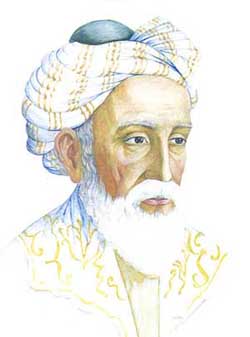
Ruba'i is Arabic for "quatrain", and is used to describe a Persian quatrain, or its derivative form in English and other languages. The plural form of the word, is used to describe a collection of such quatrains. There are a number of possible rhyme schemes to the rubaiyat form, e.g. AABA, AAAA. In Persian verse, a ruba'i is visually only two lines long, its rhyme falling at the middle and end of the lines.
Sijo is a short musical lyric practiced by Korean poets. It is usually written as three lines, each averaging 14-16 syllables, for a total of 44-46 syllables. There is a pause in the middle of each line and so, in English, a sijo is sometimes printed in six lines rather than three. An example is given below:
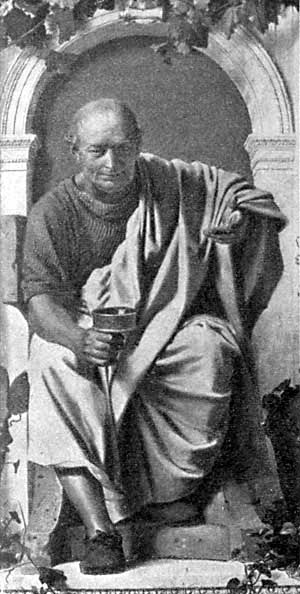
Odes were first developed by poets writing in ancient Greek, such as Pindar, and Latin, such as Horace. Forms of odes appear in many of the cultures that were influenced by the Greeks and Latins.
The ode generally has three parts: a strophe, an antistrophe, and an epode. The antistrophes of the ode possess similar metrical structures and, depending on the tradition, similar rhyme structures. In contrast, the epode is written with a different scheme and structure.
Odes have a formal poetic diction, and generally deal with a serious subject. The strophe and antistrophe look at the subject from different, often conflicting, perspectives, with the epode moving to a higher level to either view or resolve the underlying issues.
Odes are often intended to be recited or sung by two choruses (or individuals), with the first reciting the strophe, the second the antistrophe, and both together the epode. Over time, differing forms for odes have developed with considerable variations in form and structure, but generally showing the original influence of the Pindaric or Horatian ode. One non-Western form which resembles the ode is the qasida in Persian poetry.
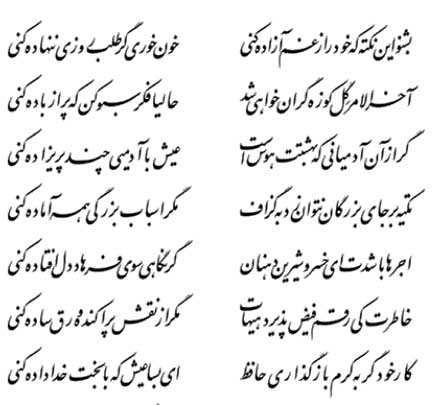
The Ghazal is a form of poetry common in Arabic, Persian, Turkish, Azerbaijani, Urdu and Bengali poetry. In classic form, the ghazal has from five to fifteen rhyming couplets that share a refrain at the end of the second line. This refrain may be of one or several syllables, and is preceded by a rhyme. Each line has an identical meter. Each couplet forms a complete thought and stands alone, and the overall ghazal often reflects on a theme of unattainable love or divinity. The last couplet generally includes the signature of the author.
As with other forms with a long history in many languages, many variations have been developed, including forms with a quasi-musical poetic diction in Urdu. Ghazals have a classical affinity with Sufism, and a number of major Sufi religious works are written in ghazal form. The relatively steady meter and the use of the refrain produce an incantatory effect, which complements Sufi mystical themes well. Among the masters of the form is Rumi, a 13th-century Persian poet who lived in Konya, in present-day Turkey.
An Acrostic is a poem or other form of writing in an alphabetic script, in which the first letter, syllable or word of each line, paragraph or other recurring feature in the text spells out another message. A form of constrained writing, an acrostic can be used as a mnemonic device to aid memory retrieval.
A famous acrostic comes from the acclamation, "Jesus Christ, God's son, savior". The initial letters of each word spell ichthys, the Greek word for fish; hence the frequent use of the fish as a symbol for Jesus Christ.
The Jewish devotional prayer Ashrei has lines beginning with each of the letters of the Hebrew alphabet in turn, implying that Jews ought to praise God with each letter of the alphabet. Likewise, the prayer Ashamnu, recited on Yom Kippur (the Day of Atonement), lists sins beginning with each letter of the alphabet, emphasizing the breadth and universality of wrongdoing.
Canzone is an Italian or Provencal song or ballad. It is also used to describe a type of lyric which resembles a madrigal. Sometimes a composition which is simple and songlike is designated as a canzone, especially if it is by a non-Italian; a good example is the aria "Voi che sapete" from Mozart's Marriage of Figaro.
While Cinquain s the general term applied to poetic forms using a 5-line pattern, there are specific forms within that category that are defined by specific rules and guidelines. The term "CINQUAIN" (pronounced SING-cane, the plural is "cinquains") as applied by modern poets most correctly refers to a form invented by the American poet Adelaide Crapsey. The first examples of these were published in 1915 in The Complete Poems, roughly a year after her death. Her cinquain form was inspired by Japanese haiku and Tanka (a form of Waka).
Elements include Prosody, Rhyme, Alliteration, Assonance, Form, and Diction.
Genres include Narrative, Epic, Dramatic, Satirical, Lyric, Elegy, Verse Fable, Prose.